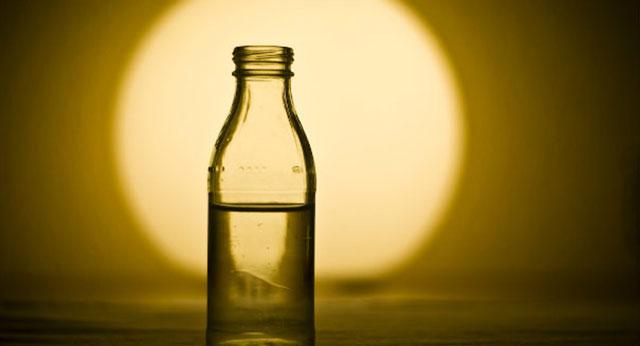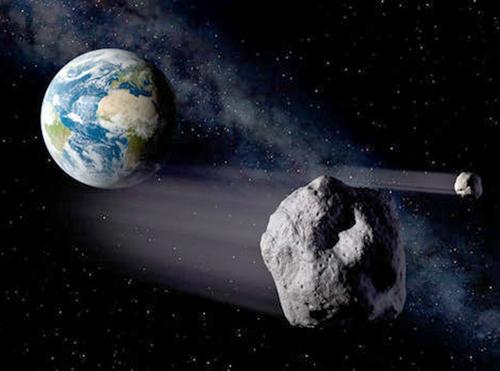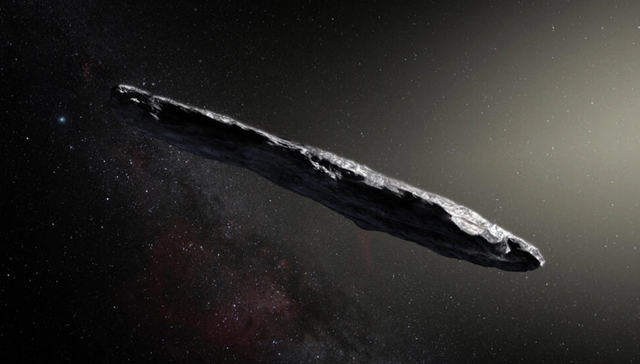You are here
Water on Earth is older than the sun
Oct 18,2014 - Last updated at Oct 18,2014

By Deborah Netburn
Los Angeles Times (MCT)
Some of the water molecules in your drinking glass were created more than 4.5 billion years ago, according to new research.
That makes them older than the Earth, older than the solar system — even older than the sun itself.
In a study published Thursday in Science, researchers say the distinct chemical signature of the water on Earth and throughout the solar system could occur only if some of that water formed before the swirling disk of dust and gas gave birth to the planets, moons, comets and asteroids.
This primordial water makes up 30 per cent to 50 per cent of the water on Earth, the researchers estimate.
“It’s pretty amazing that a significant fraction of water on Earth predates the sun and the solar system,” said study leader Ilse Cleeves, an astronomer at the University of Michigan.
This finding suggests that water, a key ingredient of life, may be common in young planetary systems across the universe, Cleeves and her colleagues say.
Scientists are still not entirely sure how water arrived on Earth. The part of the protoplanetary disk in which our planet formed was too hot for liquid or ice water to exist, and so the planet was born dry. Most experts believe the Earth’s water came from ice in comets and asteroids that formed in a cooler environment, and later collided with our planet.
But this theory leads to more questions. Among them: Where did the water preserved in the comets and asteroids come from?
To find out, scientists turned to chemistry. Here on Earth, about one in every 3,000 molecules of water is made with a deuterium atom instead of a hydrogen atom.
A deuterium atom is similar to a hydrogen atom except that its nucleus contains a proton and a neutron, instead of a lone proton. (Both atoms also contain a single electron.) That makes deuterium twice as heavy as hydrogen, which is why water molecules made with deuterium atoms (HDO) are known as “heavy water”.
The ratio of deuterium to hydrogen throughout the universe was set by the Big Bang. But for water in the solar system, the proportion is slightly higher.
Water with a high deuterium content can only form under specific conditions. The environment needs to be very cold, and there needs to be enough energy to power the reaction that binds hydrogen, deuterium and oxygen. Over the past several decades, researchers have come up with two possible — and competing — explanations of how this heavy water took up residence in our solar system.
The first is that it came from interstellar water ice that formed in the huge cloud of gas that gave birth to our sun and the solar system. Stellar nurseries can be found throughout the universe, and they are rich in both heavy water and regular water (H2O), the researchers said.
The second possibility is that the violence and energy of star birth ripped apart that interstellar water, and its building blocks got reprocessed within the protoplanetary disk that would eventually coalesce into the planets and other heavenly bodies.
For the past several years, Cleeves has been trying to determine just how much energy was able to penetrate the cold, dense region of the planet-forming disks around stars.
“This study was kind of a side project,” she said. “We realised that if the amount of energy in the disk is as low as we think, that means the water in our solar system couldn’t have formed here, and it had to come from somewhere else.”
Using computer models, she and her colleagues concluded that the disk was certainly cold enough for heavy water to form. But the gas would have been too dense to allow X-rays to enter, and the solar winds and magnetic fields would have had no trouble deflecting cosmic rays.
Without these energy sources, Cleeves said, deuterium and oxygen couldn’t have formed heavy water.
But it would have been easy for cosmic rays to penetrate the gas cloud before it collapsed into the protoplanetary disk, she said. There, those rays could have helped heavy water get made.
Ted Bergin, an astronomer at the University of Michigan and co-author of the Science study, said the results suggest there may be an abundance of ancient water in young planetary systems throughout the universe.
Most stars and their solar systems are formed in water heavy stellar nurseries similar to the one that birthed our sun. If interstellar water can survive the trauma of our sun’s birth, it is likely it can survive the birth of other stars as well.
“They are all made out of very cold material, with water, and that is being provided to planets as they are being born,” he said.
Related Articles
Icy comets may have a reputation for being the inner solar system’s ancient water delivery system, but a new study finds that most of the wa
The European Space Agency (ESA) landed a probe on a comet on Wednesday, a first in space exploration and the climax of a decade-long mission to get samples from what are the remnants of the birth of Earth's solar system.
PARIS — When the first object ever known to have visited the Earth’s Solar System from outer space zoomed past in 2017, it was so stra



















